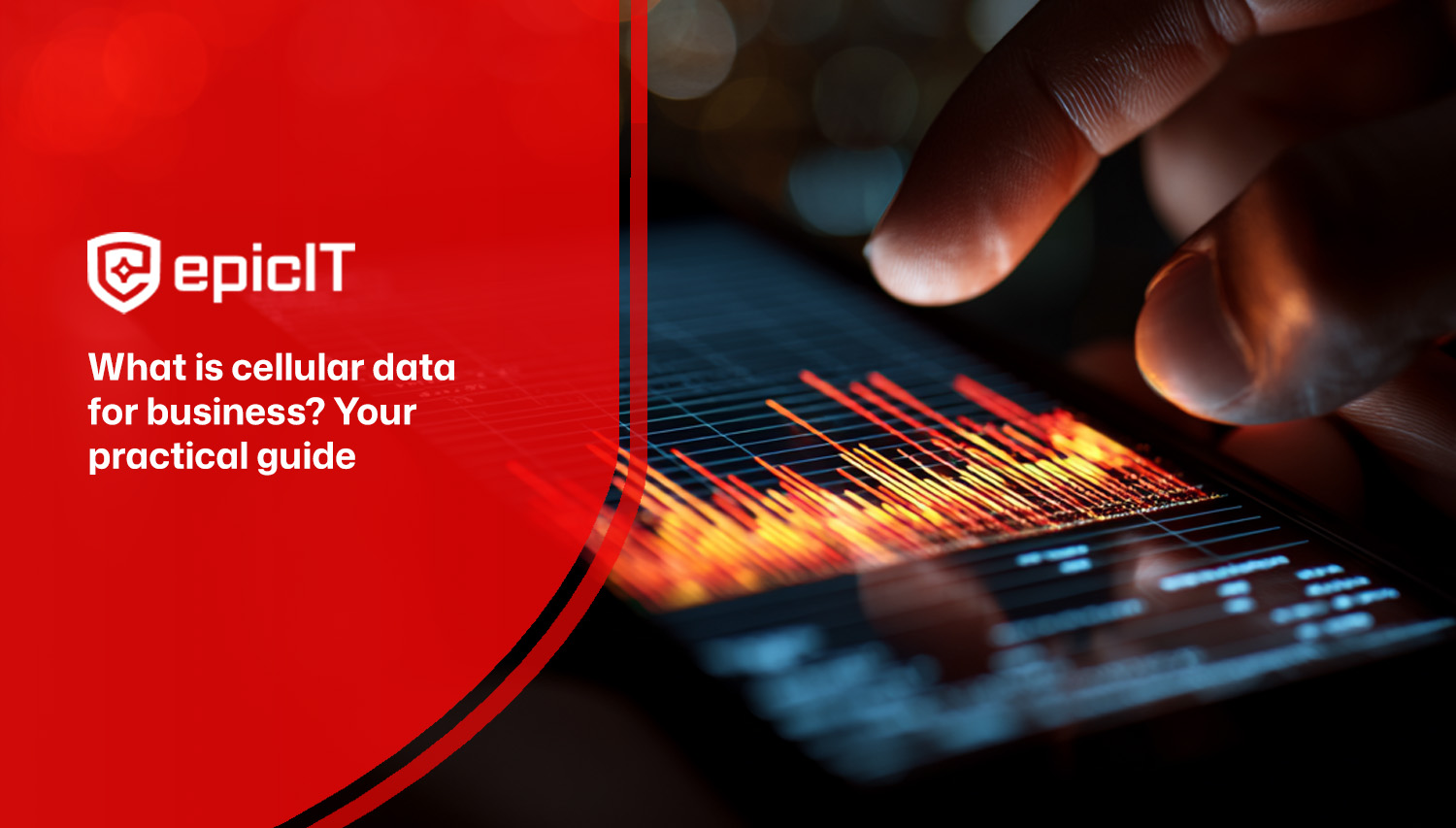
If you run a modern business, you rely on internet access for everything, from point of sale to cloud apps. Yet fixed broadband can fail or be unavailable at a critical time. That is where understanding what cellular data is and how to use it well becomes a real advantage.
In this guide, we’ll explain what a cellular data connection is, how it fits into your network, and the decisions that help you get fast, reliable, and secure connectivity.
A cellular data connection uses the mobile carrier network to move internet traffic between your devices and the cloud. Instead of a copper, HFC, or fibre line into your building, you connect through 4G LTE or 5G radio signals to the nearest cell tower. A business router or hotspot holds a SIM, authenticates to the carrier, and establishes an encrypted data session that routes your traffic to the wider internet.
Speed depends on signal quality, network congestion, and the generation of the technology. Many Australian businesses now see consistent 4G LTE speeds suitable for cloud apps and VoIP. 5G adds lower latency and much higher peak throughput, which is ideal for bandwidth-hungry use cases like rapid file sync and video collaboration.

Most organisations layer cellular alongside fixed connections. Here are the three common patterns:
If fibre is not available at your site, a high-quality 4G or 5G service can act as the primary internet. Fixed wireless can be combined with cellular for redundancy.
A small device with a SIM can provide automated failover when your fixed line drops. The router monitors the primary link and shifts traffic to cellular within seconds, so staff keep working without noticing more than a brief blip.
Some teams bond links to add capacity during peaks. Others use a cellular data connection to isolate sensitive systems, such as payment terminals, from the broader office LAN. This segmentation reduces lateral movement risk.

Construction site huts, event kiosks, and seasonal retail stores rarely have time to wait for a cable install. A preconfigured router with a SIM arrives, plugs into power, and goes live.
IService vans, emergency response units, and sales teams benefit from always-on connectivity for navigation, ticketing, and access to business systems. Antennas mounted on vehicles improve reception in fringe areas.
Sensors, environmental monitors, CCTV, and digital signage often sit where fixed lines are impractical. A cellular data connection offers broad coverage and simple deployment.
Card terminals and POS systems must transact even when your NBN link fails. Cellular failover keeps revenue flowing and avoids embarrassing downtime at the checkout.
A 5G hotspot can turn a hotel room or a client site into a productive workspace. Staff get consistent access to files and apps without relying on unknown public Wi Fi.

We analyse your applications, locations, and risk tolerance to determine where cellular makes sense as primary, backup, or augmentation.
We supply and configure business-grade routers, antennas, and SIMs. Each site is set up with automatic failover, VPN, and sensible content controls.
We monitor performance, apply firmware updates, and tune policies as your needs change. You get fewer surprises and better uptime.
If you want a resilient network that keeps staff productive, talk to our team. Explore our services and get in touch. You can also start a conversation about a tailored connectivity plan.
Understanding what cellular data is and where it fits in your technology roadmap helps you avoid outages and move faster. A well-designed cellular data connection can deliver business-grade speed, strong security, and the flexibility to work anywhere. With the right hardware, plans, and management in place, your organisation gains reliable connectivity that adapts to how you operate rather than slowing you down.
A cellular data connection uses mobile phone networks to provide internet access through a SIM-equipped router or hotspot. Your devices connect to the router, which talks to the nearest tower and out to the internet. It removes the need for a wired link and is useful for backup, mobility, or as a primary service when fibre is not available.
Yes, in many locations, a 5G cellular data connection provides speeds and latency that support video calls, cloud apps, and VoIP for small to medium teams. Performance depends on signal quality and congestion, so test at your site and consider external antennas for stability.
It can be, provided you apply standard controls. Use a firewall, segment your network, and add VPN or zero-trust access. Many businesses isolate the POS on its own VLAN and use content filtering to reduce risk. With these measures in place, a cellular data connection can safely support sensitive workloads.
Yes. Choose a plan that suits low typical usage with room to burst, set usage alerts, and configure your router to limit bandwidth-hungry services during failover. Monitoring through a cloud dashboard helps you spot issues early and avoid bill shock.
Estimate usage by listing your apps and users, then add a safety margin. Email and SaaS tools are light, while video collaboration and file sync are heavier. For failover only, usage may be small in most months, but you should still plan for short periods of high traffic during an outage.